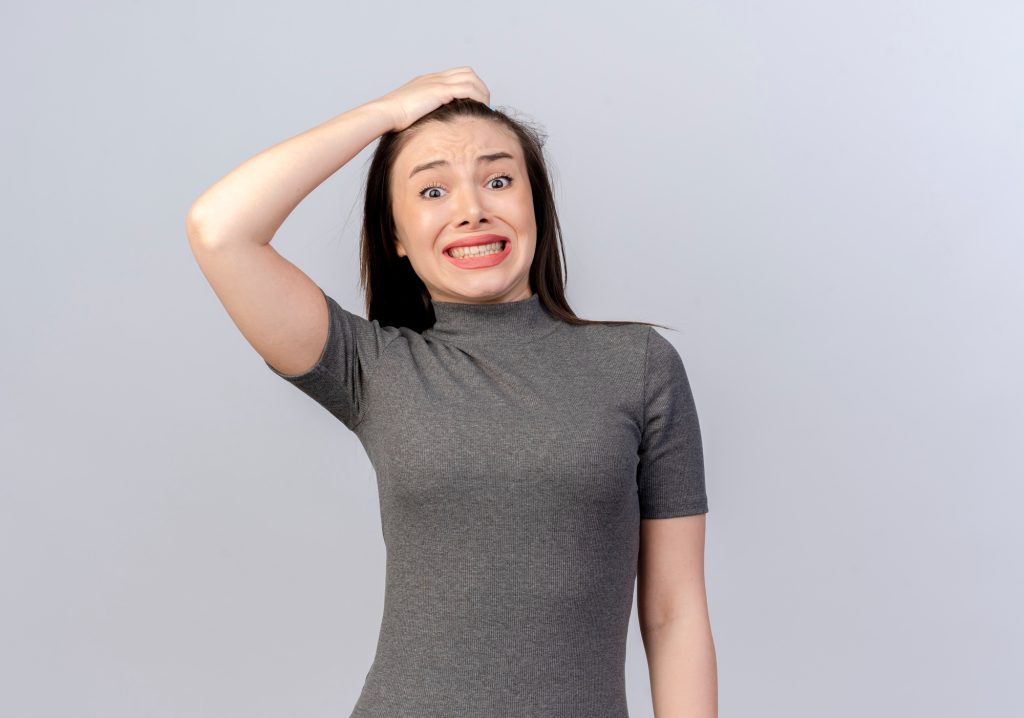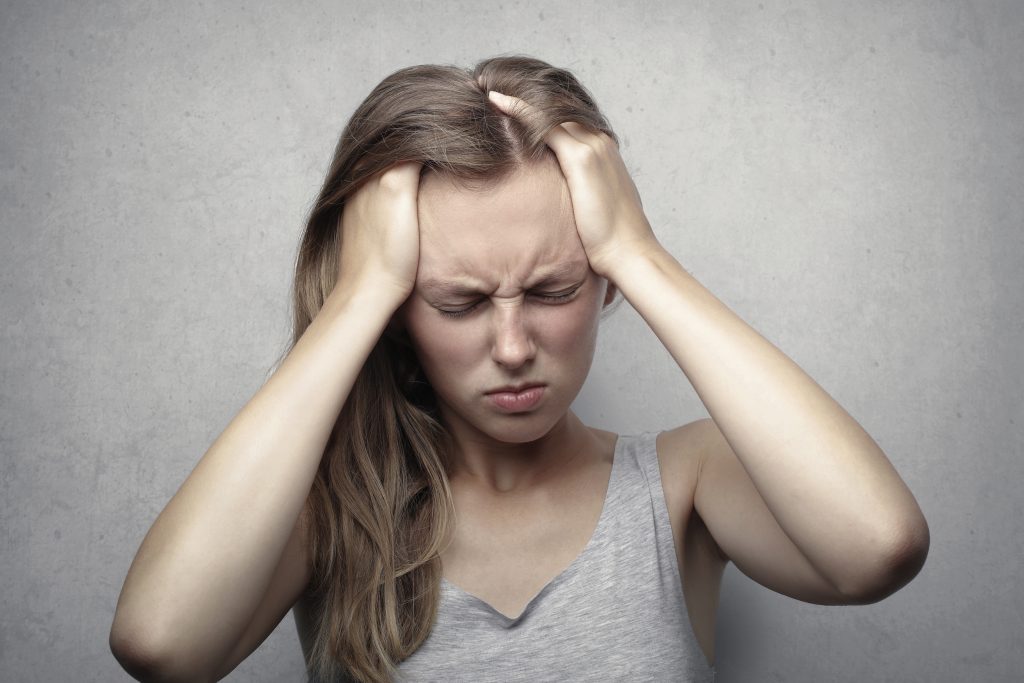Discover the early signs of thinning hair and learn what to look out for in this informative article.
Early Signs of Thinning Hair: What to Look Out For

Are you noticing more hair in your brush or drain lately? Don’t hit the panic button just yet! Thinning hair is a common issue that affects both men and women for a variety of reasons. By understanding the early signs of hair loss, you can take proactive steps to address the issue before it becomes a major concern. So, let’s dive into the fascinating world of hair growth and explore the potential causes of hair thinning.
Understanding Hair Loss
Before we get into the nitty-gritty, let’s take a moment to appreciate the complex science behind hair growth. Our hair goes through a natural cycle of growth, rest, and shedding. It’s perfectly normal to lose around 50-100 hairs per day. However, when these numbers start to add up, it’s time to pay attention.
But what exactly happens during this hair growth cycle? Let’s dive deeper into the science behind it.
The Science Behind Hair Growth
Hair growth occurs in three phases: anagen, catagen, and telogen. Anagen is the active growth phase where the hair shaft emerges from the follicle. This is the phase where your hair is actually growing and adding length. It can last anywhere from two to seven years, depending on various factors such as genetics and overall health.
After the anagen phase, the hair enters the catagen phase. This is a transitional phase where the hair stops growing and detaches from the blood supply. It lasts for about two to three weeks.
Finally, the hair enters the telogen phase, also known as the resting phase. During this phase, the hair follicle remains dormant for about three months. After this period, the hair falls out and a new one takes its place, starting the cycle all over again.
Now that we understand the intricacies of the hair growth cycle, let’s explore some common causes of hair thinning.
Common Causes of Hair Thinning
Now that we know the basics, let’s explore some common culprits behind hair thinning:
- Age: As we age, our hair naturally becomes thinner due to hormonal changes and decreased blood flow to the scalp. It’s a natural part of the aging process, but can be concerning for many individuals.
- Stress: Stressful events, such as major surgeries, emotional trauma, or even intense work deadlines, can disrupt the hair growth cycle. This disruption can lead to temporary hair loss known as telogen effluvium.
- Diet and Nutrition: A poor diet lacking essential vitamins and minerals can weaken hair follicles, leading to hair loss. Nutrients like iron, zinc, and biotin are crucial for healthy hair growth.
- Hormonal Imbalances: Hormonal fluctuations caused by conditions like polycystic ovary syndrome (PCOS) or thyroid disorders can contribute to hair thinning. These imbalances can disrupt the hair growth cycle and result in hair loss.
- Genetics: Ah, the classic “blame it on the genes” situation. Hereditary factors play a significant role in determining hair thickness. If your parents or close relatives have experienced hair loss, there’s a higher chance you may experience it too.
- Autoimmune Diseases: Conditions like alopecia areata, where the immune system mistakenly attacks hair follicles, can lead to patchy hair loss. These autoimmune diseases can cause sudden and unpredictable hair loss.
Understanding the science behind hair growth and the common causes of hair thinning can help us take better care of our locks. Whether it’s making lifestyle changes, seeking medical advice, or simply embracing our unique hair journey, knowledge is power when it comes to maintaining healthy and vibrant hair.
Identifying Early Signs of Thinning Hair
Now, let’s put our detective hats on and look out for those initial indications of hair thinning.
Thinning hair can be a cause for concern, but catching it early can help you take the necessary steps to prevent further hair loss. Here are some additional signs to watch out for:
Changes in Hair Volume
Have you recently noticed that your ponytail isn’t as thick as it used to be? Or maybe your once luscious mane feels lackluster and limp? These changes in hair volume can be a sign that your precious strands are thinning.
Thinning hair often starts with a decrease in volume. You may notice that your hair feels lighter and less dense when you run your fingers through it. It’s as if your locks have lost their vitality and bounce.
As you style your hair, you may find that it takes more effort to achieve the same fullness and body you once had. Your ponytail may appear thinner, and you may need to use more hair ties to secure it.
Alterations in Hair Texture
Another telltale sign of hair thinning is a change in the texture of your hair. It might become finer, frizzy, or more brittle than before. So, if your locks suddenly feel like they’ve turned into a fuzzy creature, pay attention!
Thinning hair often loses its natural shine and smoothness. You may notice that your hair feels rougher to the touch and lacks the softness it once had. Styling your hair may become more challenging as it becomes prone to frizz and flyaways.
Additionally, thinning hair is more susceptible to breakage and split ends. You may find that your hair strands snap easily or that you’re seeing more split ends than usual. These changes in texture can be early indicators of hair thinning.
Scalp Visibility and Hair Parting
Take a moment to examine your scalp in a well-lit mirror. Can you spot your scalp more easily than before? Is your hair parting wider than usual? If the answer is yes, it might be time to take action and prevent further hair loss.
Thinning hair often leads to increased scalp visibility, especially around the crown and hairline. You may notice that your scalp becomes more prominent, and your hair appears thinner in certain areas.
Another sign to watch out for is a wider hair parting. If you find that your hair naturally falls into a wider gap when you part it, it could be an early indication of hair thinning. Pay attention to any changes in your hair parting pattern.
Keep in mind that everyone’s hair is unique, and these signs may vary from person to person. However, if you notice multiple signs of hair thinning, it’s essential to consult with a healthcare professional or a dermatologist who can provide a proper diagnosis and recommend appropriate treatments.
The Role of Genetics in Hair Thinning
Now, let’s talk about the role of genetics in this hair-thinning drama.
When it comes to hair thinning, genetics play a significant role in determining the fate of our locks. Our genetic makeup, inherited from our parents, can influence various aspects of our hair, including its thickness and susceptibility to hair loss.
Hereditary Patterns of Hair Loss
Ever wondered why some families seem to have a history of thick, luscious hair while others battle receding hairlines? It all comes down to the genes inherited from our parents. Geneticists have identified certain hereditary patterns of hair loss that can be passed down through generations.
One common pattern is known as male-pattern baldness, which is characterized by a receding hairline and thinning hair on the crown of the head. This type of hair loss is believed to be influenced by a combination of genetic and hormonal factors. Similarly, female-pattern hair loss, although less common, can also be inherited and is characterized by a gradual thinning of the hair all over the scalp.
Understanding these hereditary patterns can help individuals gain insight into their own hair loss concerns. If your family tree features a few branches with hair loss, you might be predisposed to thinning hair. However, it’s important to note that genetics is just one piece of the puzzle, and other factors such as lifestyle, diet, and overall health can also contribute to hair thinning.
Genetic Factors Affecting Hair Thickness
Genetics don’t just determine if your nose will resemble your grandmother’s; they can also influence the thickness of your hair. Some individuals have genes that code for thinner or finer hair, making them more susceptible to hair loss.
Scientists have identified specific genes that play a role in determining the thickness of hair strands. These genes control the production of proteins and enzymes involved in hair growth and development. Variations in these genes can result in differences in hair thickness among individuals.
For example, a gene called the androgen receptor gene has been found to play a significant role in male-pattern baldness. This gene, when activated by certain hormones, can lead to the miniaturization of hair follicles, resulting in thinner and weaker hair strands. Similarly, variations in other genes, such as those involved in the production of keratin, the protein that makes up our hair, can also affect hair thickness.
It’s important to note that while genetics can influence hair thickness, it is not the sole determining factor. Environmental factors, such as exposure to certain chemicals or styling practices, can also impact the health and thickness of our hair. Therefore, maintaining a healthy lifestyle and adopting proper hair care practices can help mitigate the effects of genetic predispositions to hair thinning.
Impact of Lifestyle on Hair Health
Who knew that our daily habits could affect our hair health? Let’s explore some lifestyle factors that might contribute to hair thinning.
Stress and Hair Loss
Stress doesn’t discriminate; it can affect your hair as much as it does your mental health. High levels of stress can push your hair follicles into the resting phase, causing increased shedding and hair thinning. So, take a deep breath, relax, and give your hair a chance to thrive.
Diet and Nutrition’s Effect on Hair
You are what you eat, and so is your hair! A poor diet lacking essential nutrients like biotin, iron, and vitamins A, C, and E can weaken your hair follicles. Make sure to nourish your body with a balanced diet to keep your mane in top shape.
Medical Conditions Leading to Hair Thinning
Now, let’s take a look at some medical conditions that can contribute to hair thinning.

Hormonal Imbalances and Hair Loss
Remember those hormonal imbalances we mentioned earlier? Well, they can wreak havoc on your hair follicles. Conditions like PCOS can cause excessive production of male hormones, leading to hair thinning and even hair loss in some cases.
Autoimmune Diseases and Hair Thinning
In the battle between your immune system and your hair follicles, autoimmune diseases can serve as a powerful adversary. Conditions like alopecia areata can cause unpredictable hair loss, leaving you to wonder what the game plan is for your disappearing locks.
Now that you’re armed with the knowledge of the early signs of hair thinning, you can keep an eye out for any changes and take the necessary steps to address the issue head-on. Remember, prevention is key! So, whether it’s making healthier lifestyle choices, seeking medical advice, or embracing your genetic predisposition, you have the power to rock those locks and face hair thinning with confidence.







